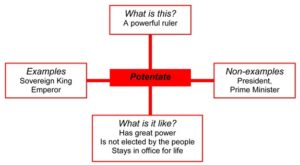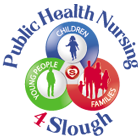VOCABULARY AT SECONDARY SCHOOL
Vocabulary becomes more complex as a child enters secondary school and their academic progress is closely linked with vocabulary skills. The emphasis moves from learning to read to reading to learn. Although pupils may gain most of their word knowledge through wide reading and discussion, explicit instruction of specific words and their meanings can contribute greatly to vocabulary development; this is especially important for pupils who have experienced difficulty in learning and retaining new words.
For vocabulary instruction to be most effective it should teach word meanings as concepts, which helps pupils to establish connections among context, their prior knowledge and the concepts or words being taught.
Here are a list of activities that aim to teach vocabulary in a variety of ways and are suitable for 1:1 or small group teaching.
Think about the definition:
- Teach synonyms (words that mean the same): often a synonym is all a pupil needs to understand a word in context.
- Teach antonyms (words that mean the opposite): not all words have antonyms, but thinking of antonyms requires pupils to identify crucial aspects of a word.
- Rewrite definitions: asking pupils to rewrite the definition of the word means they have to process information about the word.
- Discuss the difference between the new word and related words: For example, a discussion of the word ‘debris’, defined as trash, waste, or garbage, might lead onto a discussion about the difference between these words.
Think about the context:
- Provide example sentences: asking pupils to write a number of different sentences containing the target word ensures understanding. Where possible, encourage pupils to write sentences that extend the definition of the target word, for example, ‘The room was complete chaos – desks were overturned, books everywhere, and posters hanging off the walls.’
- Use more than one new word in a sentence: by doing this, pupils are encouraged to look for the relationship between words.
- Discuss the meaning of the same word in different contexts: many words have multiple meanings, depending upon the context in which they are used. Encourage pupils to explore ways of using the new word in different contexts. For example, the word ‘chaos’ can refer to classroom behaviour, someone’s personal life, clutter/mess etc.
Strategies:
- Encourage pupils to make their own personal dictionary.
- Encourage pupils to use mind-maps to show the links between words.
- Consider using visualthesaurus.com as this interactive tool allows you to discover the connections between words.
- Pupils are assigned words and work individually to:
- Write the word and look it up in the dictionary or a glossary.
- Study the definition to gain a clear understanding of the meaning and rewrite in own words (some words might require pupils to seek further assistance).
- Sketch what the word means.
- Share the meaning of each sketched word with other pupils assigned the same word and revise the sketch if necessary.
Teach word meanings as concepts using some of the following activities:
- Concept of definition maps. These are graphic displays that show common elements of a dictionary definition. These elements include:
1) category to which the word belongs (what is this?)
2) some characteristics of the word (what is it like?)
3) some specific examples and non-examples to the word. Pupils will need to refer to the context, their prior knowledge and dictionaries to find the various elements needed to complete the map. (see example below).
Once the mp is complete, model how to write a definition using the information provided. For example, ’ A potentate is a powerful ruler, who is not elected by the people, and can stay in office for life. An example of a potentate ruler is an emperor.’
- Four square. A simpler version of the concept map. Four boxes are drawn on a page.
1) In the top left box, the target word is written (e.g. soothing);
2) In the top right box, some examples are given, e.g. baths, calm music etc…);
3) In the bottom left box, non-examples are written, e.g. loud music, crying babies etc;
4) In the bottom right box a definition is written, e.g. having a calming effect.
- Semantic mapping (best completed as a group activity). Identify words that are central to the topic to be studied, then ‘brainstorm’ and discuss any other words that may be associated. For example, a semantic map on the topic of ‘weather’ may include meteorology, global, storms, precipitation, patterns and instruments.

